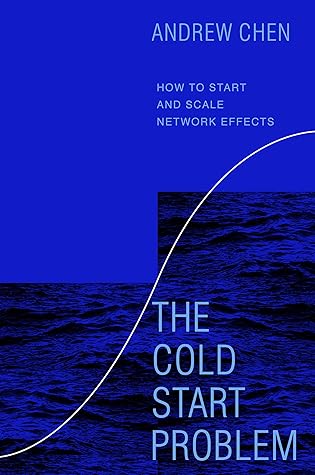More on this book
Community
Kindle Notes & Highlights
by
Andrew Chen
Read between
January 4 - March 13, 2022
Those aggregate metrics were regarded as mostly meaningless. Instead, the discussion was always centered on the dynamics of each individual network, which could be nudged up or down independently of each other, with increased marketing budget, incentive spend for either drivers or riders, product improvements, or on-the-ground operational efforts.
In its classic usage, a network effect describes what happens when products get more valuable as more people use them.
A successful network effect requires both a product and its network, and that was true in the age of the American Telephone & Telegraph Company, and true today. For Uber, the “product” is the app that people run on their phones, and the “network” refers to all the active users at any given time who are connecting with Uber to drive or ride.
The “effect” part of the network effect describes how value increases as more people start using the product.
Just as birds flock together to more easily confuse and resist predators, and mobs of meerkats warn each other of danger, goldfish share the same dynamics. This became an important concept in biology because it was the first to capture the notion that there was a tipping point—called an “Allee threshold”—where the animals would be safer and thus ultimately grow faster as a population.
While the terms are different, the core concepts and the math are the same: The Allee effect → The Network Effect Allee Threshold → Tipping Point Carrying capacity → Saturation
Humans are the networked species. Networks allow us to cooperate when we would otherwise go it alone. And networks allocate the fruits of our cooperation. Money is a network. Religion is a network. A corporation is a network. Roads are a network. Electricity is a network.
Conceptually, understanding that a product has a critical threshold is helpful, but practically speaking, what do you do with this metric? For new products, it’s important to have a hypothesis for the size of your network even before you begin. Communication apps can be 1:1, so the network is small, and you can plan accordingly. Contrast that to products that are highly asymmetrical, with content creators and viewers, or marketplaces with buyers and sellers—these are likely to require a much bigger number to hit the threshold, and require a much bigger effort to get started. The size of an
...more
The solution to the Cold Start Problem starts by understanding how to add a small group of the right people, at the same time, using the product in the right way. Getting this initial network off the ground is the key, and the key is the “atomic network”—the smallest, stable network from which all other networks can be built.
The networked product should be launched in its simplest possible form—not fully featured—so that it has a dead simple value proposition. The target should be on building a tiny, atomic network—the smallest that could possibly make sense—and focus on building density, ignoring the objection of “market size.” And finally, the attitude in executing the launch should be “do whatever it takes”—even if it’s unscalable or unprofitable—to get momentum, without worrying about how to scale.
“The next big thing will start out looking like a toy.”


